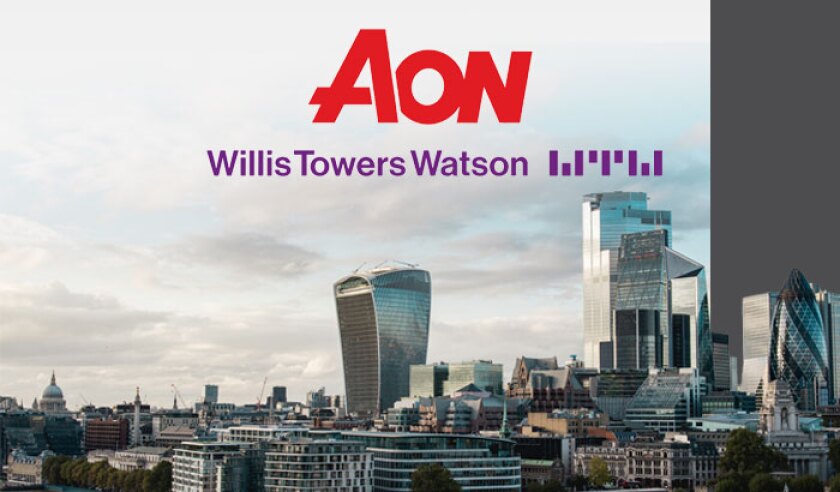In a trio of fireside discussions during day one of Insurance Insider’s (Re)Connect conference, Aon’s Andy Marcell, Lockton Re’s Tim Gardner and Guy Carpenter’s David Priebe laid out their strategies to compete in the midst of rising reinsurance rates, the pandemic recovery and consolidation in the reinsurance broking arena.
M&A
Aon reinsurance solutions CEO Marcell addressed the impact of the collapse of the Aon-Willis merger, and specifically, Aon losing out on obtaining Willis Re due to regulatory intervention when the Aon-Willis deal was still in the offing.
With Willis Re now sold to Gallagher Re, Marcell said the dramatic M&A developments in the past year and a half had been a “sideshow” for clients rather than a major concern.
“It’s more about ‘what can you do to improve my outcome?’
“That is in sharper focus today, not just because of what’s happened with Aon and Willis, but more because of what’s happened in the external environment to them,” he said, adding that ransomware, climate change and capital flows into the industry were clients’ chief concerns.
Lockton Re CEO Gardner, however, suggested that the outcome showed that the reinsurance broking industry was not likely to go back to a big-three dominance.
“If you take a reinsurer lens, where they saw 70%, 80% or 90% of their business coming from three sources, it just didn’t really feel like a viable marketplace.”
Gardner added that he expected to see some consolidation between the challenger brokers that have set up shop in the past two years, but only to a limited extent.
“With a lot of the newer entrants, they may get to the point in the near future where it’s clear that they just don’t have the capability to compete and the money behind them might say, ‘this is an opportunity we saw, we pursued it to a degree, but it’s really not for us.’”
However, the executive added that this might not lead to much acquisition appetite. “If you’re a challenger broker that hasn’t built something that brands [you] as unique, there may not be a lot of value to ultimately purchase.”
Gardner added that some start-up reinsurance brokers have begun with niche capabilities in the hope that they can build out into other lines and geographies as they grow, but he noted that this was more time-consuming and runs the risk of losing clients who need broader capability.
Talent
The past few years have been a period of intense competition for broking talent as challenger brokers make compelling offers to teams within their larger rivals and brokers within the biggest intermediary companies react to M&A deals.
Aon’s Marcell forecast more interest in M&A in the carrier market and said: “The war for talent will no doubt continue unabated and hopefully Aon Re will be a place that they want to come and work.”
Lockton’s Gardner said that whereas previously the two largest impediments to creating a challenger broker were technology and talent, overcoming both hurdles was now a far easier feat.
“It was very hard to get talented people to come out of the big three brokers and go to a smaller brand, and that is not the case as we’ve seen of late,” said Gardner.
“There has been a ton of movement to the challenger brokers. It’s a more compelling and exciting opportunity to build a business from the ground.”
Systemic risk – climate change and pandemic
The industry’s view of systemic risk, as seen after the experience of the Covid-19 pandemic, was at the forefront of all three speakers’ minds.
Guy Carpenter chairman Priebe said the insurance industry will need to work with governments to forge public private partnerships on systemic risks like pandemic.
The pandemic had sharpened minds into thinking particularly about systemic risks with non-physical business interruption-type impacts, including cyber.
“We need to do better job on new risks, particularly in intangibles and non-physical damage. Reinsurers can help with solutions, from a risk transfer standpoint and with better managing exposure,” Priebe said.
On cyber, he said that a move towards affirmative cover or exclusions in the reinsurance industry have helped stamp out “silent cyber” coverage. But moving to standalone cyber policies would enable better understanding and quantification of the risk by putting it in a “box”.
“Until all cyber risk is excluded from traditional risk policies and moved to standalone cyber policies, the remediation probably hasn’t gone far enough.”
Marcell said that climate change was another major systemic risk that is of concern to clients, due to pressure from investors and boards of insurance companies.
He added that while North American hurricanes and Japanese typhoons are relatively well modelled, there is also a pattern of increasing severity in lesser modelled perils such as Californian wildfires and flooding in Europe and Australia.
Investors are asking what that will do to returns. “Do I view this as a permanent change and how do I accommodate that? And the models I get – will I know they are right in 50 years’ time? Those are the biggest questions out there,” said Marcell.
He said reinsurance brokers, modellers and clients are working together on how to introduce parametric covers for these types of risks, as well as delivering the risk models and improved understanding of such risks to support reinsurers taking cat risk.
Marcell said the challenge for the (re)insurance industry now is to find ways to protect clients from other systemic risks, such as political instability or water vulnerability.
In terms of questions being asked on climate change and ESG strategies, Priebe said that it would be difficult to drive more information disclosure between insurers and reinsurers without regulatory action and that disclosing more information could put cedants at a competitive disadvantage.
"Certain reinsurers are asking for this information, but not everyone is,” he said.
Looking ahead to 1 January
Reinsurance rates, though still rising in the wake of the 2018 and 2019 cat losses and the pandemic, have been tapering off since mid-year.
However, there is increasing concern that the (re)insurance industry is setting its cat budgets too high and failing to achieve pricing adequacy in the face of worsening cat losses due to climate change.
Lockton’s Gardner said that Hurricane Ida, although not as costly as it could have been had it struck New Orleans, “adds to the narrative” around property rate adequacy.
“There are a lot of carriers that are sitting back and saying, ‘I’m just seeing a preponderance of loss, whether that is a frequency of lower severity events, whether that’s an introduction of unmodelled events.
“There is work to be done across the property business, insurance reinsurance and retro.”
Marcell agreed and said reinsurers were questioning whether the riskiness of cat business and the aggregate exposure they have has changed.
He added that reinsurers, however, still face a conflict between writing premium in order to fulfil their portfolio management needs and resisting downwards pressure on pricing.
The full (Re)Connect agenda is available here.
To attend the conference, simply follow this link to register.



